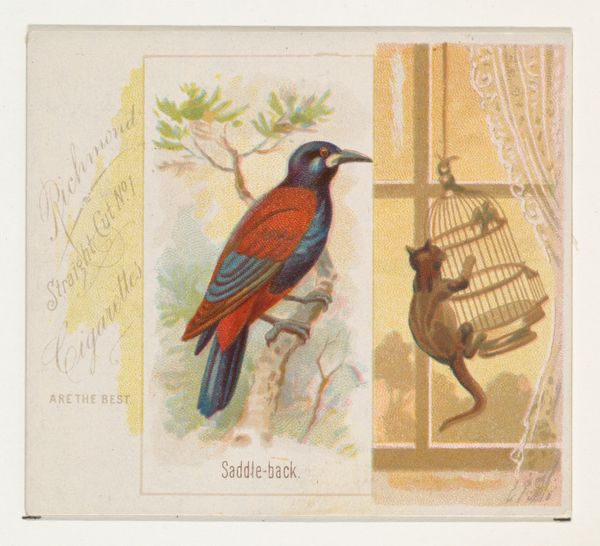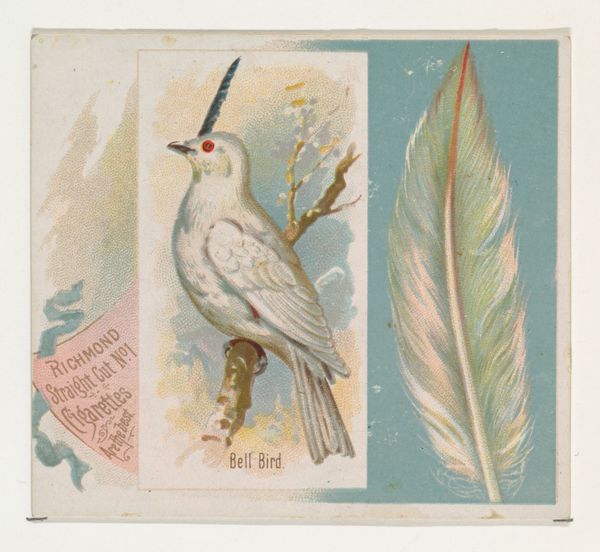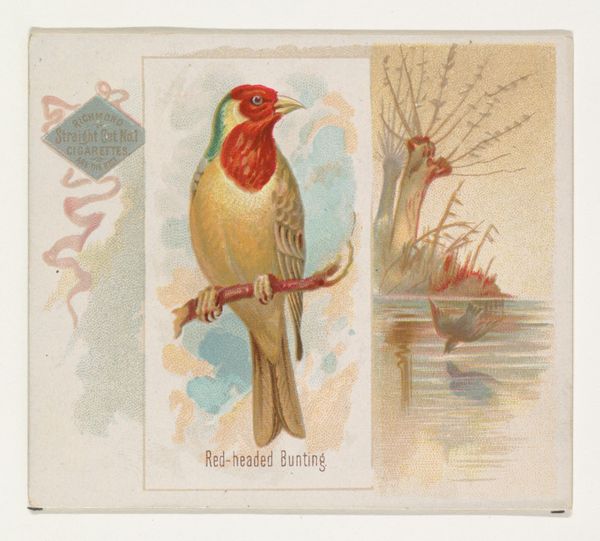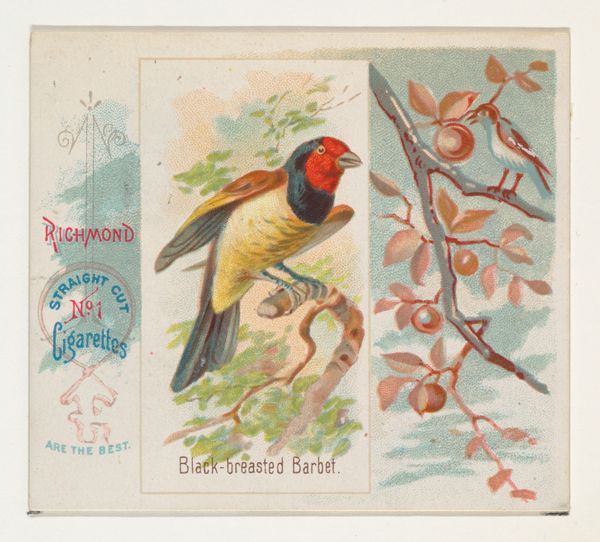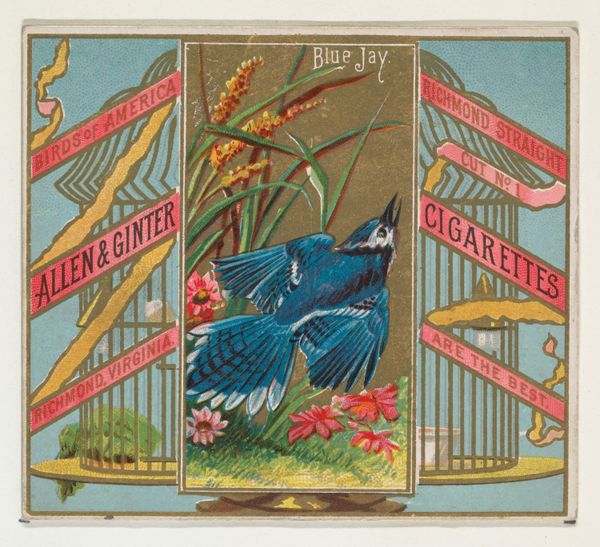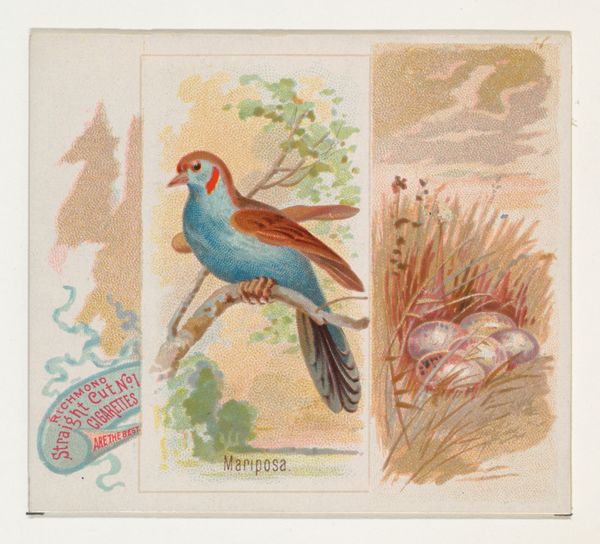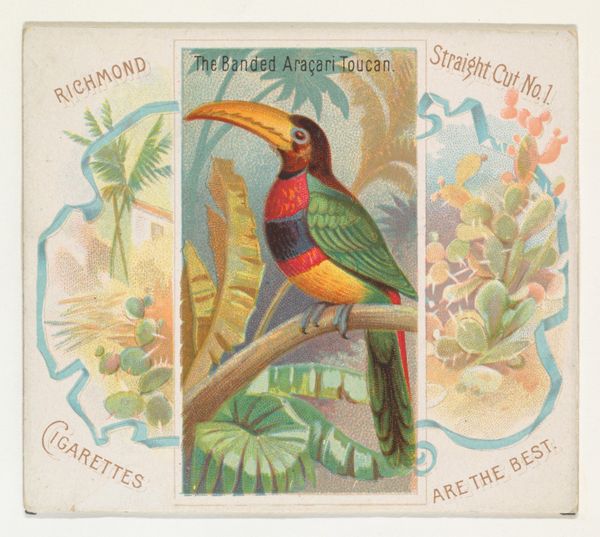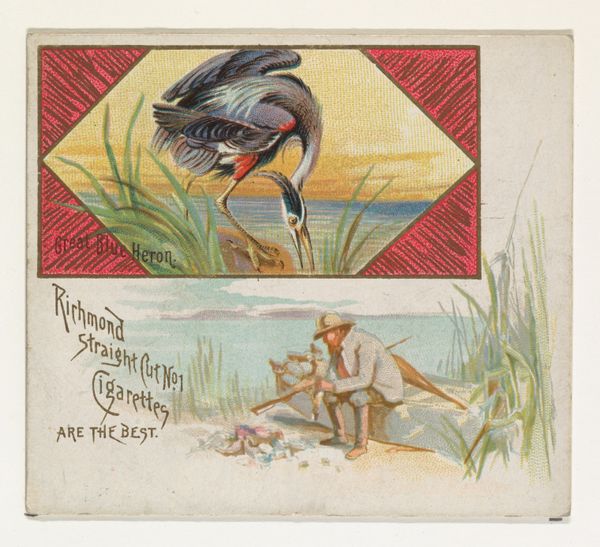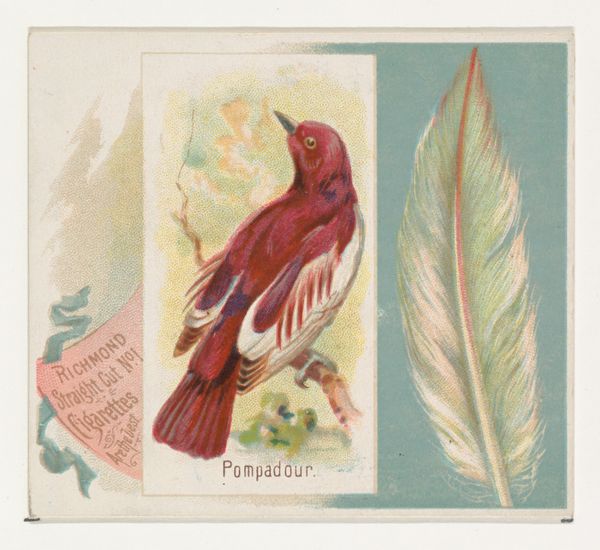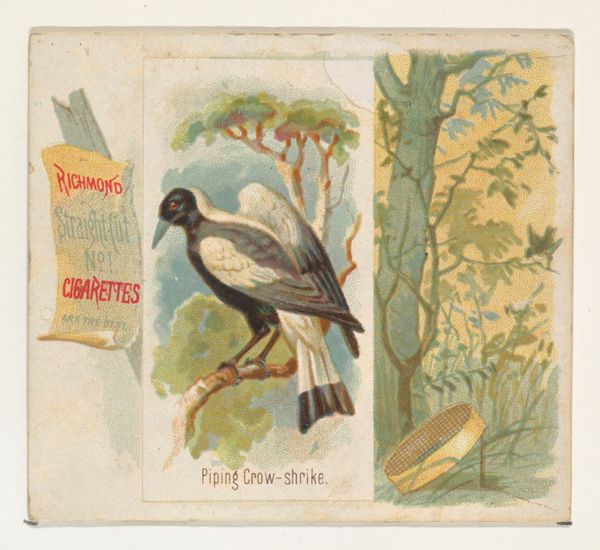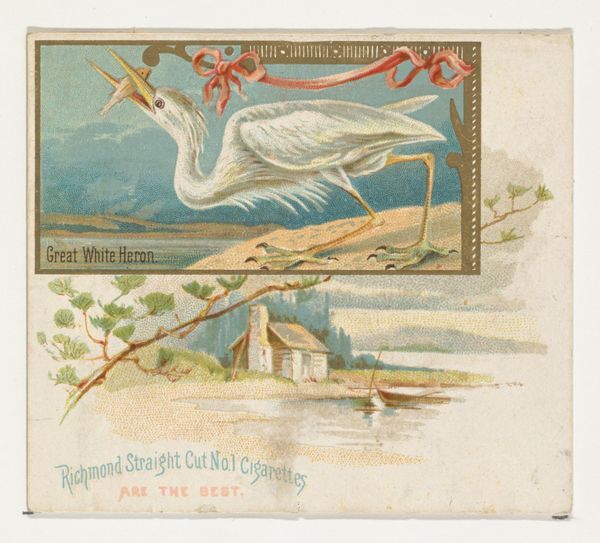
Barn Swallow, from the Birds of America series (N37) for Allen & Ginter Cigarettes 1888
0:00
0:00
Dimensions: Sheet: 2 7/8 x 3 1/4 in. (7.3 x 8.3 cm)
Copyright: Public Domain
Curator: What a charming vignette. At first glance, this strikes me as quite delicate, perhaps a bit sentimental, in its depiction of avian domesticity. Editor: We are looking at a print from 1888 titled "Barn Swallow," part of the "Birds of America" series by Allen & Ginter Cigarettes, now residing at the Metropolitan Museum. It incorporates watercolor elements and is an interesting commercial object, more so than a traditional piece of fine art. Curator: Absolutely. Considering its original context as a cigarette card alters our interpretation. The design's symmetry, the strong circular composition broken by rectilinear forms in the corners, almost borders on art nouveau, even though that movement was just nascent at the time. Editor: The aesthetic is striking; it shares a certain visual language with Ukiyo-e prints. Given the date and commercial origin, what strikes me is how popular natural history imagery was and its deployment for marketing. Allen & Ginter leverage ornithological accuracy, alongside romanticized views of nature, to signal their product's supposed quality to consumers. Curator: Precisely. Consider the rendering of the birds: detailed and lifelike yet framed within an idealized setting. The nest itself becomes an almost architectural feature, emphasized by those dangling straws, mirroring similar techniques from traditional painting, where line quality dictates object’s depth within space. The colors, carefully layered washes of watercolor, also direct attention. Editor: Note, too, how the "Birds of America" inscription at the bottom directly parallels the brand names on either side; both underscore distinct nationalistic pride. What a commentary on industry commodifying American nature and packaging it for mass consumption, particularly tobacco during that time. Curator: A perfect illustration of the formal encoding of socio-economic imperatives. Ultimately, it's an effective confluence of natural observation, artistry, and market appeal. Editor: It truly showcases the layered history of imagery, both natural and manufactured, within the culture industries of late 19th-century America.
Comments
No comments
Be the first to comment and join the conversation on the ultimate creative platform.

